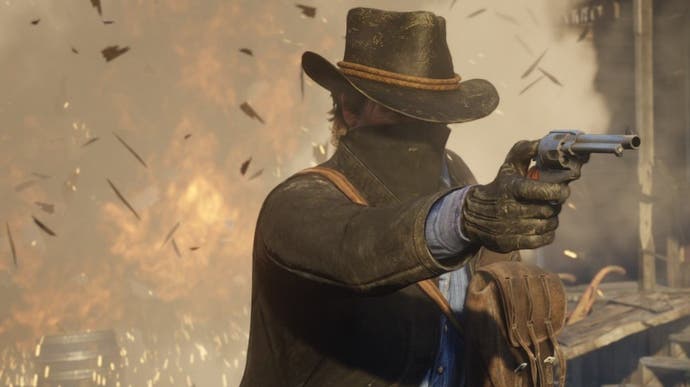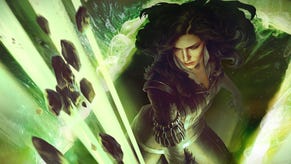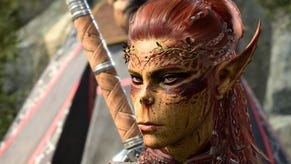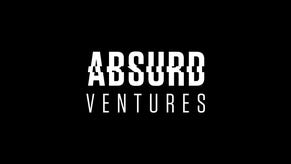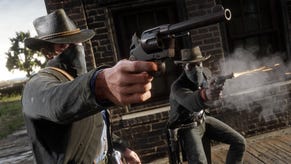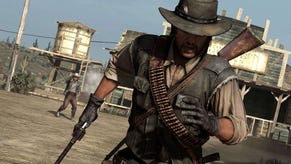How Red Dead Redemption 2 uses the power of PS4 Pro
Examining Rockstar's enhanced console debut.
Last week's Red Dead Redemption 2 reveal turned out to offer more than a look at gameplay alone - it was our first chance to check out Rockstar's first work on the enhanced consoles, the entire trailer captured in-game from the PlayStation 4 Pro build. So how is the developer using the console's hardware and based on our findings here, what should we expect from Xbox One X?
Rockstar provided us with a pristine, 68mbps version of the trailer to take a look at - and there's no doubt that those vast landscapes are flattered by the 4K output, but there's more to the story here. Looking close at each cut in the edit indicates PS4 Pro natively runs at 1920x2160, halving the pixel count on the horizontal axis from a proper 4K. It works surprisingly well given the scale of the game, even if vertical inclines appear softer than a true 4K image. Actually, in terms of the overall pixels, it's a 12.5 per cent increase over 1440p - a more regular number we see on Pro supported titles.
This 1920x2160 setup has other benefits, specifically that the fact it's scaling only in one direction means a cleaner division of pixels. Based on what this trailer's showing - and it could change by launch - it's a more effective way to project this massive world to ultra HD TVs. And to put it another way, presuming the base PS4 version runs at 1920x1080, PS4 Pro makes is using its 2.4x boost in GPU power by simply doubling the resolution. That potentially leaves a shade of GPU headroom for other effects, or even a smoother frame-rate if that's a problem on regular hardware. But again, there are a lot of 'ifs' here, and we'll need to see what the score is in October.
The second question relates to checkerboarding. Our initial reaction to a halved horizontal resolution of 1920 would be that it's one step towards reconstructing, to create a more convincing 4K image. And here's the thing - on occasional edges you'll see a sharp, 4K resolve - one stairstep per pixel - but for a majority of the time these are 1920 wide, meaning stairsteps on that axis have a double pixel width. We did pick up artefacts similar to checkerboarding, mainly on transparent elements, like horse tail hair, trees and grass. It's possible that this is what we're seeing, but certainly not a typical result for the technique at large, and so we'll have to revisit this with the final game.
Even purely on the grounds of image quality, this is a sensible vote of support for Pro, if not quite the kind of full-blooded implementation we tend to see from Sony's first party studios. The more enticing prospect is what Xbox One X brings to the table, seeing as there's a more marked ramp-up in overall power there. Interestingly, Microsoft is hosting its own version of the gameplay trailer on its YouTube channel, with PlayStation button prompts swapped out for Xbox equivalents - but it is the exact same footage, identical to the frame, and by extension, sourced from PS4 Pro too. For its part, Microsoft is listing RDR2 as a 4K title with HDR support on its Xbox One X support page, but the varying accuracy of the stats on that page generally means that nothing conclusive can be drawn right now.
Granular performance analysis isn't possible from the trailer (it's a 30fps game and a 30fps video encode) but the good news is that there isn't a single dropped frame in the trailer at all. Assuming this is a standard capture from the pre-release code running in real-time, the signs look good here for a smooth experience when the game launches.
That's the setup then, but we can't overlook the visuals. A brand new focus for the latest trailer is how gameplay flows, and the way animations blend from one point to the next. Cutscenes can be choreographed easily enough - determined using body rigs - but here we get to see how guns are drawn, horses gallop, and wildlife scurries across the plains all in real-time. Case in point: the horse animations. The original Red Dead Redemption's movement could at times appear a little rigid while on horseback, but here Arthur Morgan's stead shows a huge variety of options in motion. Strafing sideways past a mountain can blend directly into a full gallop - with the tail hair swaying based on physics simulation rather than a script. There are even idle animations for dragging its hooves as you load the saddle with guns and game - it's all nuanced to a degree we'd expect from Rockstar, and cements it as a major focus of the game.
Wildlife in general has a big presence in the trailer too. From crows circling overhead, to packs of wolves, moose, bears, and lizards - Rockstar's going to town on its fauna for more than aesthetic appeal. It sets up an exciting ecosystem, where all these creatures can seemingly interact with one another - but fundamentally, from a gameplay perspective, it opens up opportunities to hunt. Much like the improved animations, it's about creating more systems in an open-ended field of possibilities. A glance back to the original Red Dead Redemption's more barren spots - even in its native 4K incarnation on Xbox One X - reminds us of just how far we've come.
By design, Red Dead Redemption 2 has an advantage over the Grand Theft Auto series. Gone are the complex, bustling cities lined with traffic and pedestrians, with Rockstar able to take a technical side-step, committing console resource to other ambitions. The urban sprawl is out, and now the challenge is in rendering more organic spreads of forests, deserts and town streets as far as the eye can see. Certainly, the PS4 Pro footage here seems adept at this. Sweeping shots from cliff-sides are keenly shown off and there are no signs of pop-in or LOD transitions during fast chases.
A special mention also has to go to the interplay between lighting and materials across the trailer. Of course, we've seen this in the last few reveals: the mud, the sheen on a horse's leather saddle, and even the way footprints impress on snow - it's all beautifully presented. Just as striking is the way every scene here involves volumetric lighting effects of some kind. For some scenes it's a morning fog as light streams through derelict buildings and trees - shading that thick spread of grass. For others it's a billow of dust through prison cells, or even main town streets, spiraling up to obscure the sun. Either way, the sense of volume you get from shot to shot is remarkable to behold - and a real mark of how far Rockstar's engine has evolved since the last Red Dead, and even GTA5.
Speaking on materials, water rendering is also a big point of interest. We're getting screen-space reflections across rivers and lakes, which gives a beautiful impression of the on-land action. It's perhaps the only area where we can nit-pick a little though. While eye-catching, the mirror image is missing a pass of anti-aliasing, which can present visible sawtooth edges. It's not a massive deal, and it's the only remotely rough point in the whole trailer. We know GTA5 on PC has a separate MSAA option purely for reflections, and it's possibly too taxing an option to enable on console versions - even PS4 Pro. Fortunately, the rest of the game benefits from a pass of anti-aliasing that does a great job with that 4K upscale and every other element on screen.
Post-process effects also add to the spectacle. Depth of field is used liberally - mainly in cutscenes, but also for long views in gameplay, putting the background out of focus. Equally, we get a pass of screen-space ambient occlusion across the game for shade, which is par for course these days. An interested choice here is the avoidance of motion blur entirely, which keeps the movement, from frame to frame, completely clean. Having even a camera-based motion blur would be a good fit for a 30fps game like this in our view, though for many it's a matter of preference. An optional toggle would be hugely welcome, and at the very least, per-object blur would have added a lot to the package here.
This sets a precedent in Rockstar's unveiling of Red Dead Redemption 2. The 4K presentation on PS4 Pro is one thing, but to see actual, playable action use all the rendering techniques we previously saw in cutscenes says a lot. The animations, the post-effects, lighting and material-work all hold up to scrutiny, even when it's in the player's hands. Rockstar's always excelled at balancing scale at the macro level with micro-level detail - and the good news is RDR2 looks to be pushing the envelope on both fronts. More gameplay trailers are expected to be revealed before the game launches - if any further details stand out, we'll be sure to let you know.
